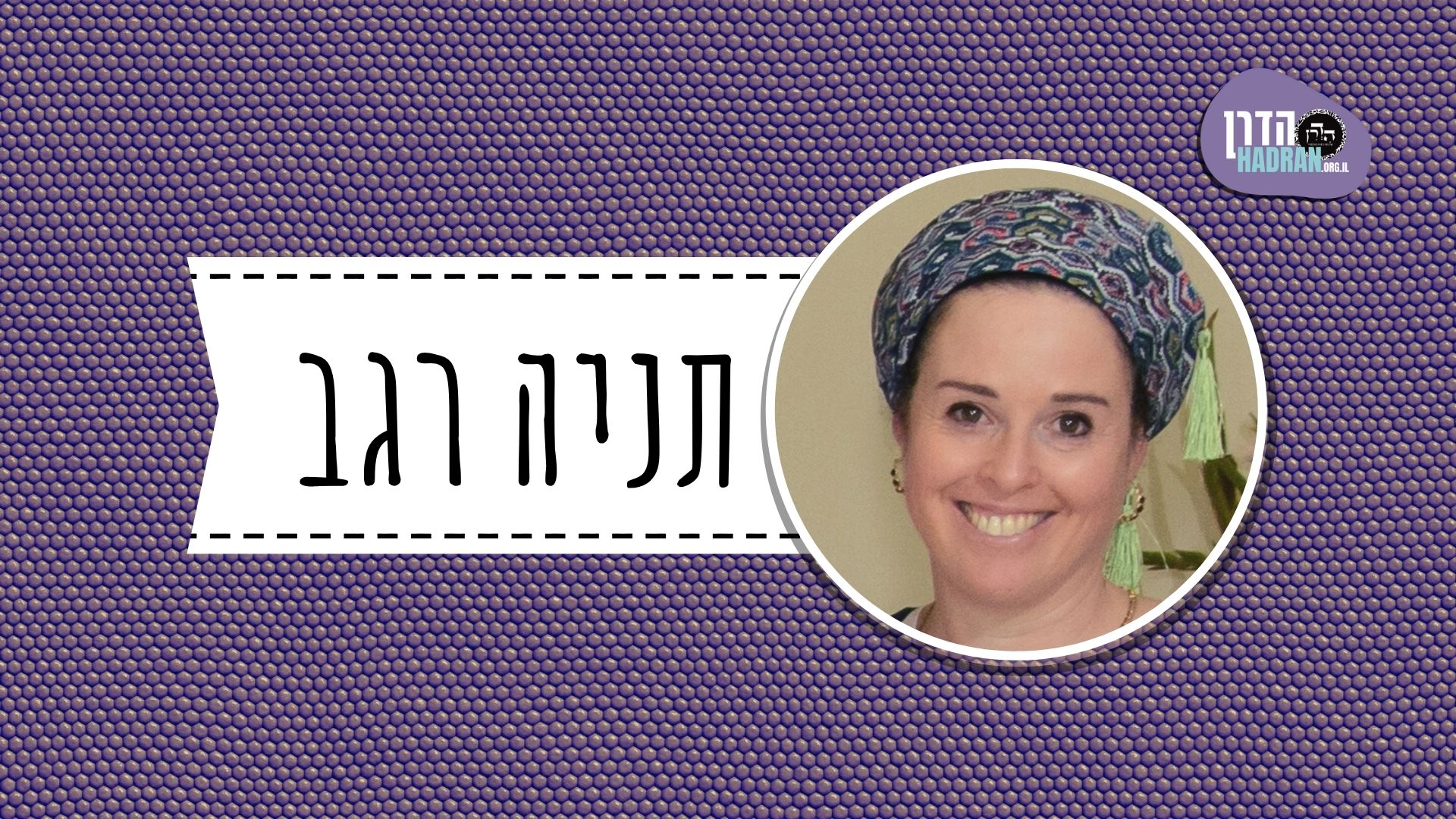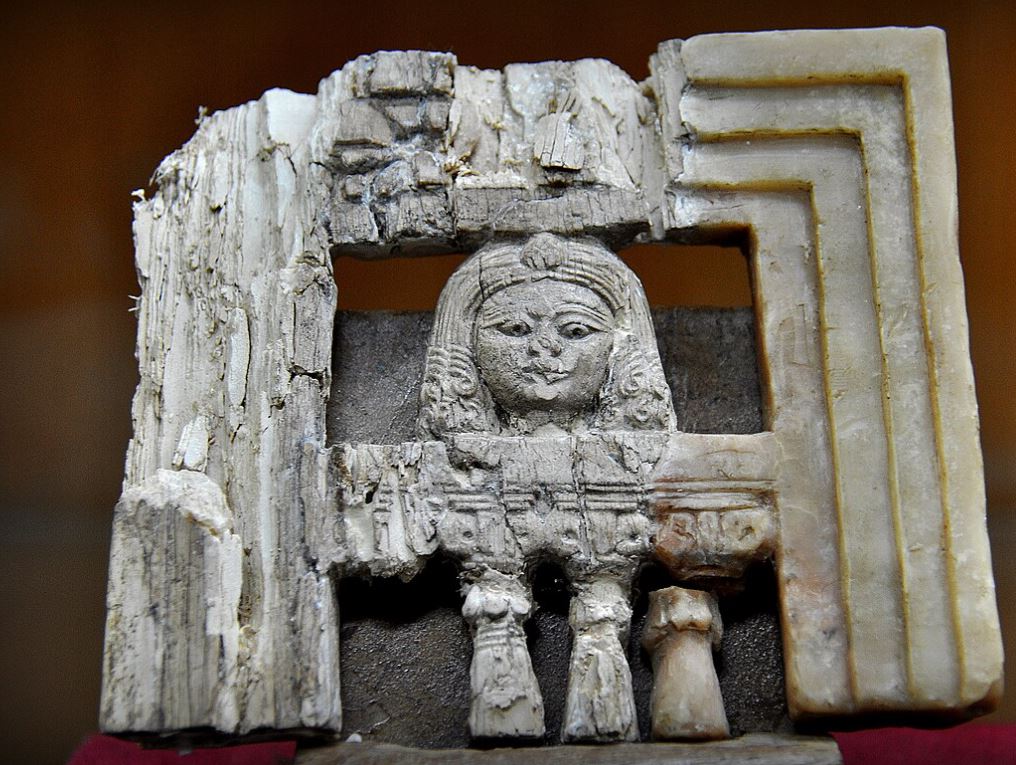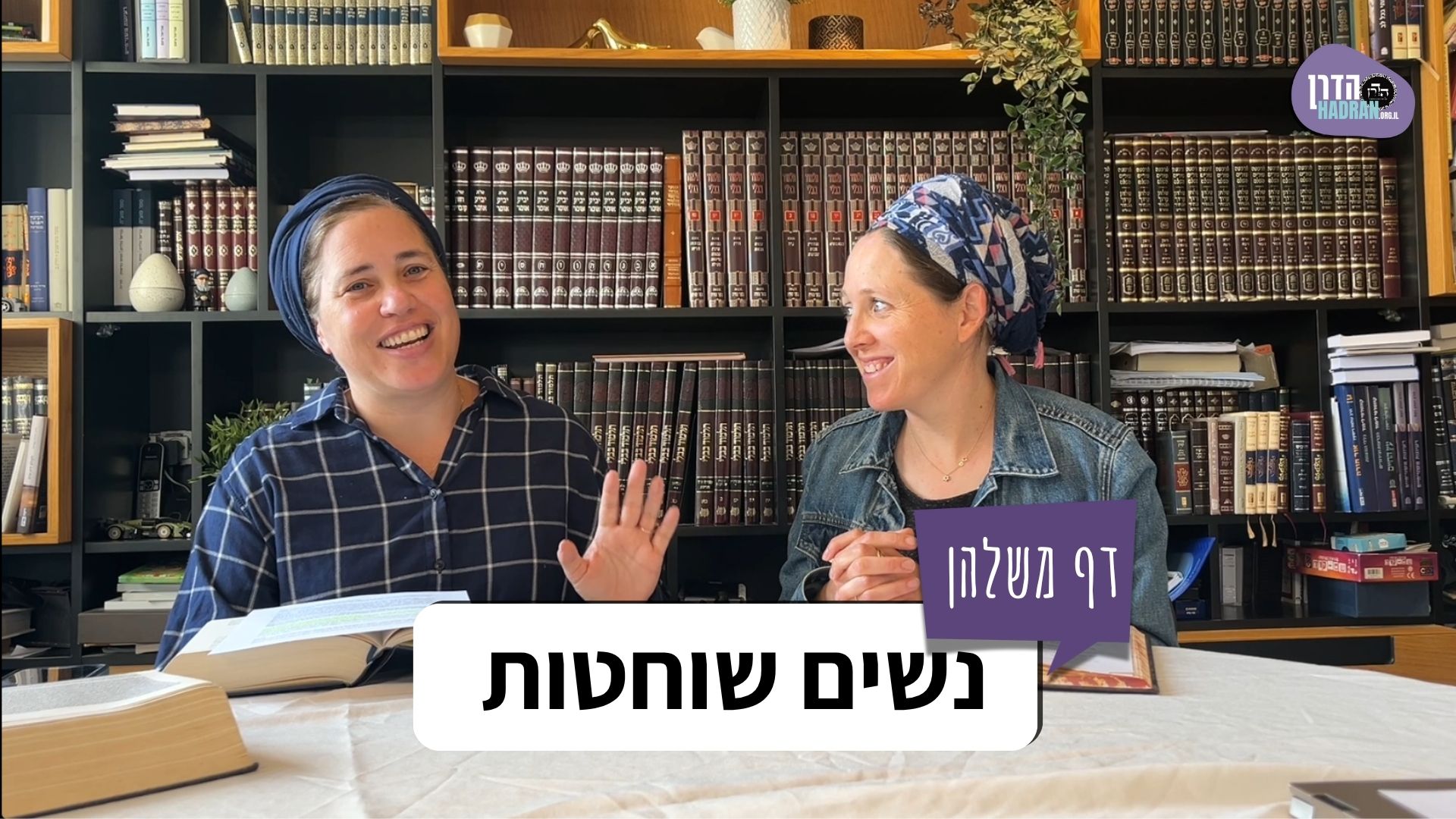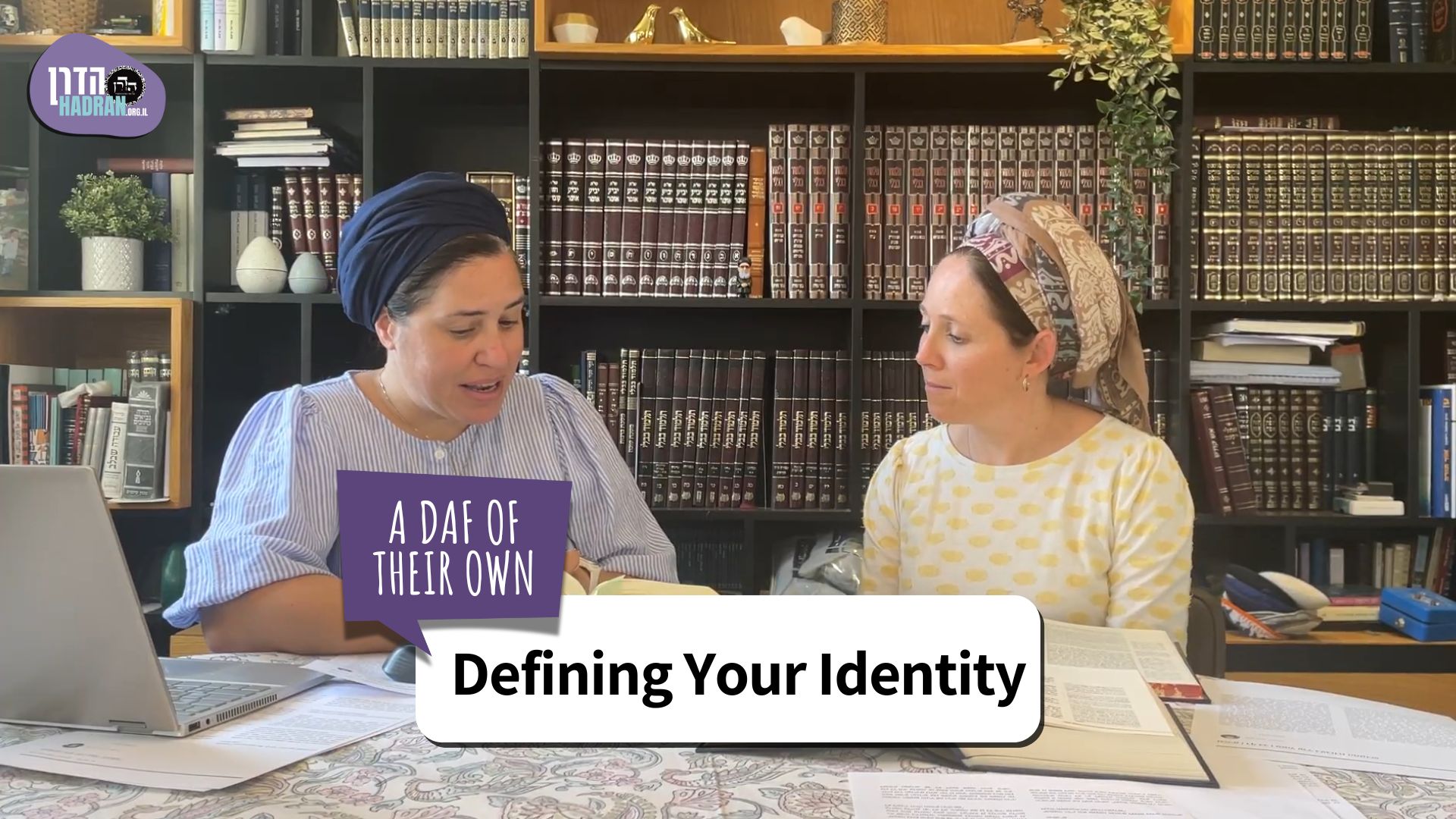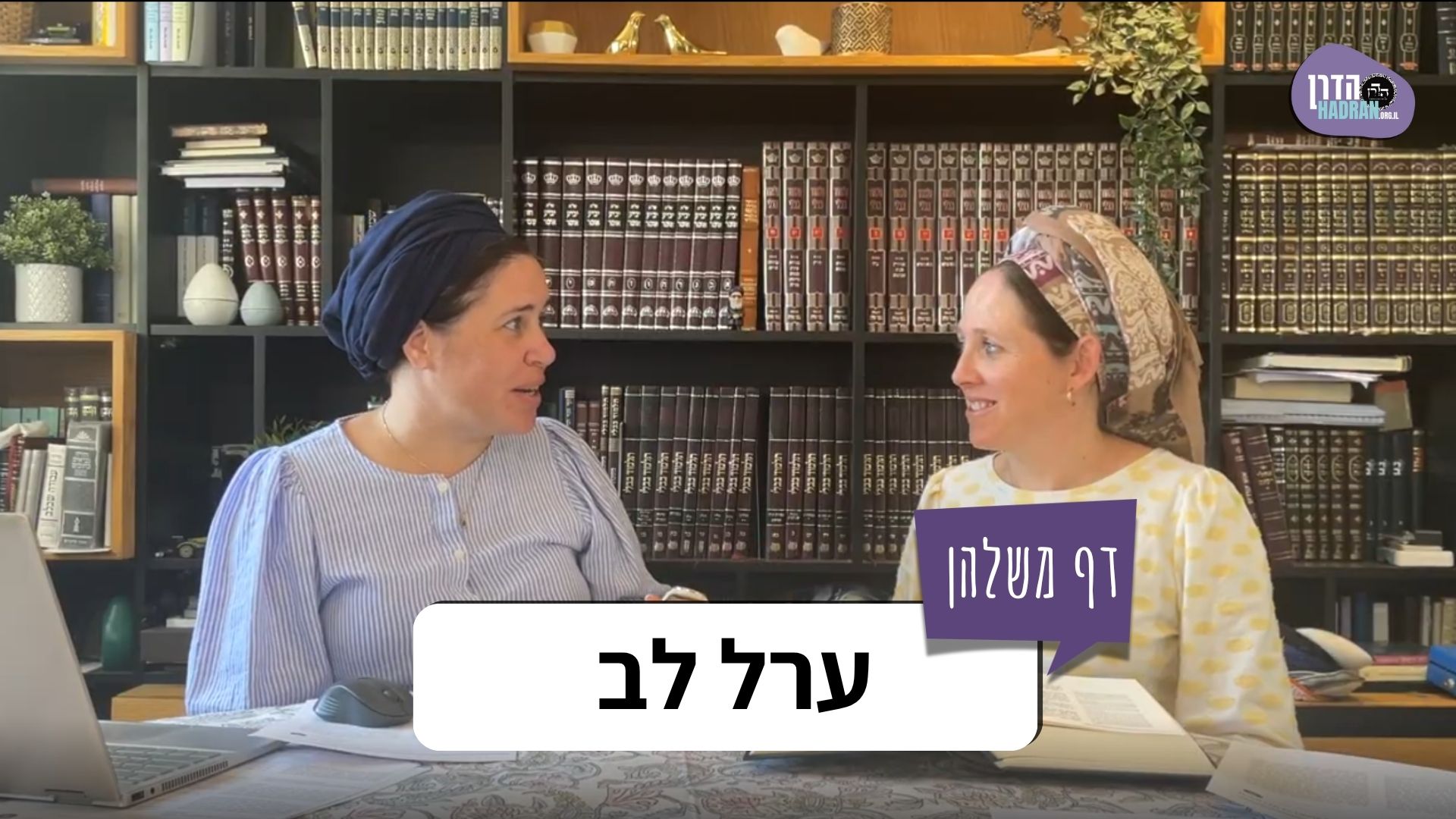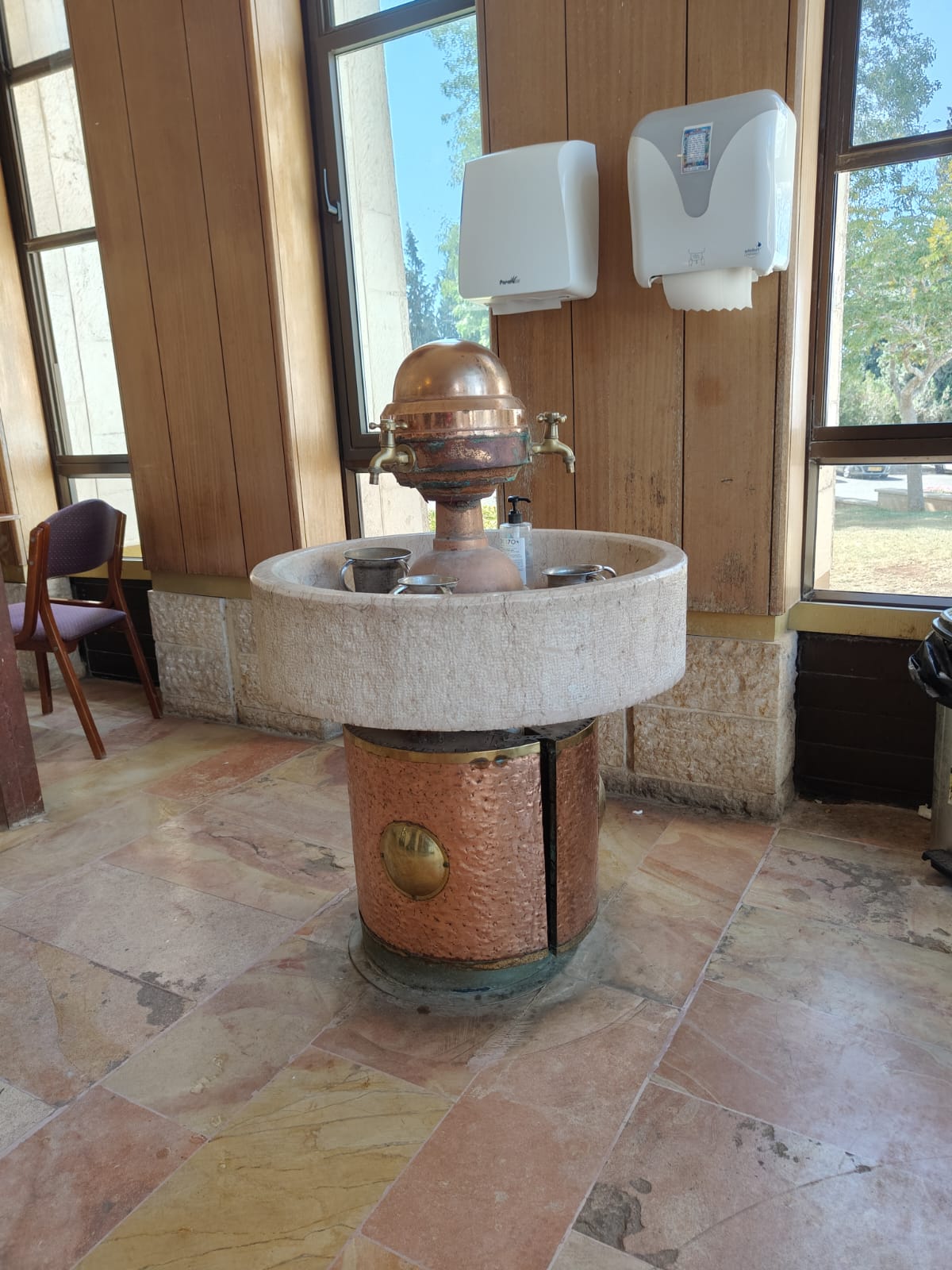There is story highlighting the struggles of power between the rabbis of Israel and Babylonia at the beginning of the time period of the Amoraim – a story with Rabbi Yochanan, Reish Lakish and a student of Rav. The mishna lists which problems do not render an animal a treifa. If there is a list of what is and a list of what isn’t a tereifa, what about items that are not included in either list?
This month’s learning is sponsored by Beth Balkany in honor of their granddaughter, Devorah Chana Serach Eichel. “May she grow up to be a lifelong learner.”
Want to dedicate learning? Get started here:


This month’s learning is sponsored by Beth Balkany in honor of their granddaughter, Devorah Chana Serach Eichel. “May she grow up to be a lifelong learner.”
Delve Deeper
Broaden your understanding of the topics on this daf with classes and podcasts from top women Talmud scholars.
New to Talmud?
Check out our resources designed to help you navigate a page of Talmud – and study at the pace, level and style that fits you.
The Hadran Women’s Tapestry
Meet the diverse women learning Gemara at Hadran and hear their stories.
Chullin 54
וושט נקובתו במשהו דרוסתו במשהו קנה נקובתו בכאיסר דרוסתו בכמה בתר דבעיא הדר פשטה אחד זה ואחד זה במשהו מאי טעמא זיהריה מקלא קלי ואזיל
If the gullet is perforated in any amount, the animal is a tereifa, as taught in the mishna (42a). Therefore, if the gullet is clawed and any amount of its flesh reddens, the animal is a tereifa as well. But a perforation of the windpipe renders the animal a tereifa only where it is the size of an issar. If clawed, what amount of its flesh must redden in order to render it a tereifa? After he raised the dilemma he then resolved it: Both this and that render the animal a tereifa if any amount of its flesh reddened. What is the reason for this? It is because its venom burns continuously around the circumference of the hole and widens it.
יתיב רב יצחק בר שמואל בר מרתא קמיה דרב נחמן ויתיב וקאמר דרוסה שאמרו צריכה בדיקה כנגד בני מעיים (ר”נ אמר) האלהים מורי בה רב מכפא ועד אטמא
The Gemara relates: Rav Yitzḥak bar Shmuel bar Marta sat before Rav Naḥman, and he was sitting and saying: A clawed animal, about which the Sages said one must be concerned, requires inspection adjacent to the intestines to see that the flesh has not reddened. Rav Naḥman said to him: By God! Rav would teach that it must be inspected over its entire body, from the flesh around the hollow to that of the thigh.
מאי כפא אילימא כפא דידא היינו כנגד בני מעיים אלא מכפא דמוחא עד אטמא
The Gemara asks: What is the hollow? If we say that it is the hollow of the foreleg, i.e., its shoulder, then the area between it and the thigh is the same as the area adjacent to the intestines, and Rav Naḥman has said nothing new. Rather, Rav Naḥman referred to the area from the hollow of the brain, i.e., the skull, to the thigh.
כי סליק רב חייא בר יוסף אשכחינהו לרבי יוחנן וריש לקיש דיתבי וקאמרי דרוסה שאמרו צריכה בדיקה כנגד בני מעיים אמר להו האלהים מורי בה רב מכפא ועד אטמא א”ל ריש לקיש מנו רב ומנו רב ולא ידענא ליה
The Gemara relates that when Rav Ḥiyya bar Yosef went up from Babylonia to Eretz Yisrael, he found that Rabbi Yoḥanan and Reish Lakish were sitting and saying: A clawed animal, about which they said one must be concerned, requires inspection adjacent to the intestines. Rav Ḥiyya bar Yosef said to them: By God! Rav would teach that it must be inspected from the flesh around the hollow to that of the thigh. Reish Lakish said to him: Who is this Rav, and who is this Rav? I do not know who he is.
א”ר יוחנן ולא נהירא ליה לאותו תלמיד ששימש את רבי רבה ור’ חייא והאלהים כל אותן שנים ששימש אותו תלמיד בישיבה אני שמשתי בעמידה ומאן גבר הוא גבר בכולא
Rabbi Yoḥanan said to him: But don’t you remember that student who served the great Rabbi Yehuda HaNasi and Rabbi Ḥiyya and studied under them? But by God! All those years that this student served in the yeshiva, he was held to be one of the most important students and was allowed to sit during study, while I held a lower status and served while standing up. And who was greater? He was greater in all things, in Torah and piety.
מיד פתח ריש לקיש ואמר ברם זכור אותו האיש לטוב שאמרו שמועה מפיו שמוטה ושחוטה כשרה שאי אפשר לשמוטה שתיעשה שחוטה
Immediately, Reish Lakish began to speak and said: Indeed [beram], that man, Rav, is remembered for the good, as they said this halakha in his name: If an animal’s windpipe is dislocated from the throat, and it has already been slaughtered, and it is uncertain whether it was dislocated before or after slaughter, the animal is kosher, as it is impossible for an animal with a dislocated windpipe to be slaughtered. A dislocated windpipe would have slipped away from the knife, and therefore the animal must have been slaughtered while it was still attached.
ור’ יוחנן אומר יביא ויקיף
And Rabbi Yoḥanan says: This is not certain; rather, one should bring the windpipe, make a new slit in it, and compare the two slits. If they are similar, then the first slit by the slaughtering knife was also made after the windpipe was dislocated, and the animal is a tereifa. If they are different, then the slaughter preceded the dislocation of the windpipe and the animal is kosher.
אמר רב נחמן לא שנו אלא שלא תפס בסימנים אבל תפס בסימנים ושחט אפשר לשמוטה שתיעשה שחוטה:
Rav Naḥman said: The Sages taught that it is impossible to slaughter a dislocated windpipe only in cases where he did not grip the simanim during slaughter. But if he gripped the simanim and slaughtered the animal, then it is possible for an animal with a dislocated windpipe to be slaughtered, since it will not slip away from the knife.
זה הכלל: לאתויי מאי לאתויי שב שמעתתא
§ The mishna states: This is the principle: Any animal that was injured such that an animal in a similar condition could not live for an extended period is a tereifa. The Gemara asks: What case does this principle add that was not previously mentioned? The Gemara responds: It was stated to add seven halakhot of tereifot taught by amora’im and not listed in the mishna. These cases are enumerated on 42b.
דבי יוסף רישבא מחו בגידא נשיא וקטלי אתו לקמיה דרבי יהודה בן בתירא אמר להו וכי להוסיף על הטרפות יש אין לך אלא מה שמנו חכמים
The Gemara recounts: The men of the house of Yosef the hunter would strike the sciatic nerve of an animal with an arrow and kill it that way. In other words, the animal would die from that wound. They came before Rabbi Yehuda ben Beteira to ask if an animal with an injured sciatic nerve is a tereifa, which is relevant if the animal was slaughtered before it died. Rabbi Yehuda ben Beteira said to them: And is it possible to add to the list of tereifot? You have only what the Sages counted, and the Sages mentioned no such tereifa.
רב פפא בר אבא רישבא מחו בכוליא וקטלי אתו לקמיה דרבי אבא אמר להו וכי להוסיף על הטרפות יש אין לך אלא מה שמנו חכמים
Likewise, the men of Rav Pappa bar Abba the hunter would strike an animal in the kidney with an arrow and kill it that way. They came before Rabbi Abba to ask if such an animal is a tereifa. Rabbi Abba said to them: And is it possible to add to the list of tereifot? You have only what the Sages counted.
והא קא חזינן דקא מתה גמירי דאי בדרי לה סמא חייא:
The Gemara objects: But we see that they die. Isn’t this an indication that the animal is a tereifa? The Gemara responds: It is learned as a tradition that in all these cases, if one were to scatter medicine on the wound, the animal would live. An animal is not considered a tereifa unless it cannot be healed.
מתני׳ ואלו כשרות בבהמה ניקבה הגרגרת או שנסדקה עד כמה תחסר רשב”ג אומר עד כאיסר האיטלקי נפחתה הגולגולת ולא ניקב קרום של מוח ניקב הלב ולא לבית חללו נשברה השדרה ולא נפסק החוט שלה ניטלה הכבד ונשתייר הימנה כזית
MISHNA: And these, despite their condition, are kosher in an animal: If its windpipe was perforated or cracked lengthwise. How much can the windpipe be missing and still be kosher? Rabban Shimon ben Gamliel says: Until the perforation is the same size as the Italian issar. If the skull was fractured but the membrane of the brain was not perforated, it is kosher. If the heart was perforated and the perforation did not reach its chamber, or if the spinal column was broken but its cord was not cut, or if the liver was removed and an olive-bulk of it remained, it is kosher.
המסס ובית הכוסות שניקבו זה לתוך זה ניטל הטחול ניטלו הכליות ניטל לחי התחתון ניטלה האם שלה וחרותה בידי שמים הגלודה רבי מאיר מכשיר וחכמים פוסלין:
Additionally, it is kosher if the omasum or the reticulum was perforated one into the other. If the spleen was removed, or the kidneys were removed, or if its lower jaw was removed, or if its womb was removed, or if its lung shriveled by the hand of Heaven, the animal is kosher. In the case of an animal whose hide was removed, Rabbi Meir deems it kosher, and the Rabbis deem it a tereifa and unfit for consumption.
גמ’ אתמר רבי יוחנן אמר אלו טרפות דוקא ור’ שמעון בן לקיש אמר אלו כשרות דוקא
GEMARA: The mishna begins: And these are kosher, while the previous mishna begins: These are tereifot. With regard to this, it was stated that Rabbi Yoḥanan says: The tanna intended the phrase: These are tereifot, specifically, teaching that an animal is kosher in another case. The list of kosher cases here is therefore not exhaustive. And Rabbi Shimon ben Lakish says that the tanna intended the phrase: These are kosher, specifically, teaching that an animal is a tereifa in another case. The list of tereifot at the beginning of the chapter is therefore not exhaustive.
במאי קא מיפלגי בדרב מתנא דאמר רב מתנא האי בוקא דאטמא דשף מדוכתיה טרפה ר’ יוחנן אמר אלו טרפות דוקא תנא טרפות ותנא זה הכלל
The Gemara explains: With regard to what case do they disagree? They disagree with regard to the statement of Rav Mattana, as Rav Mattana says: This head of the femur that was completely dislocated renders the animal a tereifa. According to Rabbi Yoḥanan, who says that the phrase: These are tereifot, is meant specifically, the tanna taught the list of tereifot and taught afterward: This is the principle, to add cases that were not stated explicitly;
וחזייה לדרב מתנא דאתיא בזה הכלל מאי טעמא דדמיא לנטולי תנא אלו טרפות הני הוא דטרפה הא דרב מתנא כשרה
and the tanna then saw that the case of Rav Mattana, where the end of the thigh is dislocated, ostensibly comes under the heading of: This is the principle, and one might assume that it renders the animal a tereifa as well. What is the reason for this? It is because a dislocated thigh is similar to the cases of removed organs that render the animal a tereifa. Therefore, he taught the phrase: These are tereifot, at the beginning of the mishna, to emphasize that it is only these that render an animal a tereifa, but in the case of Rav Mattana, the animal is kosher.
ור’ שמעון בן לקיש אמר אלו כשרות דוקא תנא טרפות ותנא זה הכלל וחזייה לדרב מתנא דלא אתיא בזה הכלל מ”ט לאו לנקובי דמיא ולא לפסוקי דמיא ולנטולי נמי לא דמיא תנא אלו כשרות הני הוא דכשרות הא דרב מתנא טרפה
And according to Rabbi Shimon ben Lakish, who says that the phrase: These are kosher, is meant specifically, the tanna taught the list of tereifot, and taught afterward that this is the principle. And the tanna then saw that the case of Rav Mattana ostensibly does not come under the heading of: This is the principle, and one might assume that it does not render the animal a tereifa. What is the reason for this? It is because a dislocated thigh is not similar to cases of perforated organs, and it is not similar to cases of cut organs, such as the windpipe, and it is not similar to cases of removed organs. Therefore, he taught the phrase: These are kosher, to emphasize that it is only these that are kosher, but in the case of Rav Mattana, the animal is a tereifa.
גופא אמר רב מתנא האי בוקא דאטמא דשף מדוכתיה טרפה ורבא אמר כשרה ואי איפסיק ניביה טרפה והלכתא איפסיק נמי כשרה עד דמתעכלא אתעכולי:
The Gemara addresses the matter itself: Rav Mattana says: This head of the femur that was completely dislocated renders the animal a tereifa. And Rava said: The animal is kosher, but if its sinew holding the bone in place is cut, it is a tereifa. The Gemara concludes: And the halakha is: Even if the sinew is cut, the animal is still kosher, unless the sinew decomposed, in which case the animal is a tereifa.
עד כמה תחסר [וכו’]: אמר זעירי אתון דלא מיתחמי לכון שיעורא שיעוריה בדינרא קורדינאה והוי כפשיטא זוטרתי ומשתכחא ביני פשיטי דפומבדיתא
§ The mishna states: How much can the windpipe be missing and still be kosher? Rabban Shimon ben Gamliel says: Until the perforation is the same size as an Italian issar. Ze’eiri, who came from Eretz Yisrael, said with regard to this: You, who are not familiar with the measure of an Italian issar, because it is not used in Babylonia, should estimate its measure as a Kurdish dinar. And it is like a small peruta coin and can be found among the perutot of Pumbedita.
אמר רבי חנא פתוראה עילא מינאי הוה קאי בר נפחא ובעא מיני דינרא קורדינאה לשערי ביה טריפתא ובעי למיקם מקמיה ולא שבקני אמר לי שב בני שב אין בעלי אומניות רשאין לעמוד מפני תלמידי חכמים בשעה שעסוקין במלאכתם
Rabbi Ḥana the money changer said: Bar Nappaḥa, i.e., Rabbi Yoḥanan, was standing over me, and he requested of me a Kurdish dinar with which to measure tereifot, in accordance with the statement of Ze’eiri. And I wanted to rise before him out of respect, but he did not let me. Rabbi Yoḥanan said to me: Sit, my son, sit. Tradesmen are not permitted to stand before Torah scholars when they are engaged in their work.
ולא והתנן כל בעלי אומניות עומדים מפניהם ושואלין בשלומן ואומרין להם אחינו אנשי מקום פלוני בואכם בשלום
The Gemara asks: And are tradesmen not permitted to stand before Torah scholars? But didn’t we learn in a mishna (Bikkurim 3:3): When the pilgrims bring their first fruits to Jerusalem, all the tradesmen stand before them, and greet them, and say to them: Our brothers from such and such place, welcome?
אמר רבי יוחנן מפניהם עומדין מפני תלמידי חכמים אין עומדין אמר רבי יוסי בר אבין בא וראה כמה חביבה מצוה בשעתה שהרי מפניהם עומדין מפני תלמידי חכמים אין עומדין
Rabbi Yoḥanan said: Yes, they stand before those bringing first fruits, but they do not stand before Torah scholars. Rabbi Yosei bar Avin says: Come and see how beloved is a mitzva performed in its proper time, as the tradesmen stand before those who brought first fruits, while they do not stand before Torah scholars.
ממאי דילמא כדי שלא תהא נמצא מכשילן לעתיד לבא
The Gemara rejects the statement of Rabbi Yosei bar Avin: From where does one know that they rise out of respect? Perhaps the tradesmen stand only in order not to cause those bringing first fruits to fail and sin in the future. That is, if the tradesmen do not treat those bringing the first fruits with great respect, they may not make the effort to travel to Jerusalem in a subsequent year.
אמר רב נחמן כסלע כיתר מכסלע כאיסר כיתר מכאיסר
§ The mishna states: How much can the windpipe be missing and still be kosher? Rabban Shimon ben Gamliel says: Until the perforation is the same size as an Italian issar. With regard to this, Rav Naḥman says: Whenever the Sages specify the measure as that of a sela, e.g., with regard to a damaged skull for purposes of tereifot, they mean that even an area exactly the size of a sela is treated as more than a sela. Likewise, when they specify the measure as that of an issar, they mean that an area exactly the size of an issar is treated as though it were more than an issar.
אלמא קסבר רב נחמן עד ולא עד בכלל
Since Rav Naḥman holds that a perforation exactly the size of an issar is treated as though it were larger than an issar, he must hold that such a perforation in the windpipe renders the animal a tereifa. The Gemara therefore infers: Apparently, Rav Naḥman holds that whenever the Sages use the word: Until, it means until and not including the measure, as the mishna states that an animal with a perforated windpipe is kosher until the perforation reaches the size of an issar.
איתיביה רבא לרב נחמן חבל היוצא מן המטה עד חמשה טפחים טהור מאי לאו חמשה כלמטה לא חמשה כלמעלה
Rava raised an objection to the opinion of Rav Naḥman from a mishna (Kelim 19:2): The end of a rope that extends from a rope bed is not susceptible to ritual impurity until it is five handbreadths long. If the bed becomes impure, the rope remains pure, because it has no use and is therefore not considered part of the bed. What, is it not teaching that a rope exactly five handbreadths long is treated as though its length were below that amount? If so, the word: Until, means until and including the exact measure. The Gemara responds: No, a rope exactly five handbreadths long is like a rope whose length is above that amount.
ת”ש מה’ ועד עשרה טמא מאי לאו עשרה כלמטה לא עשרה כלמעלה
The Gemara suggests: Come and hear a proof from the continuation of the mishna: If the end of the rope was of any length from five handbreadths until ten, it is susceptible to impurity. What, is it not teaching that a rope exactly ten handbreadths long is treated as though its length were below that? The Gemara responds: No, a rope exactly ten handbreadths long is treated like a rope whose length is above that, and it is not susceptible to impurity.
תא שמע הדקין שבכלי חרס הן וקרקרותיהן ודופנותיהם יושבין שלא מסומכין
The Gemara suggests: Come and hear proof from another mishna (Kelim 2:2): With regard to the smallest of earthenware vessels, if they, or even their broken-off bases or sides, can sit, i.e., remain upright, without being supported,





